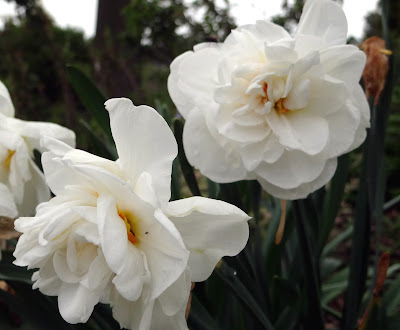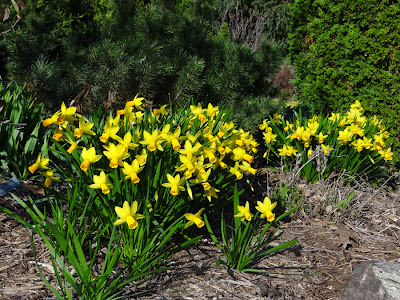 |
| American Robin |
Wow, spring is early this year! It's forecast to be in the 60s all next week, which is crazy for Wisconsin.
In "normal" winters, the first sign of spring is seeing a Robin. Most people can recognize an American Robin -- the red breast of Robins is unmistakable.
But, this year, I saw flocks of Robins all winter! They rarely overwinter here in Wisconsin (at least in the olden days!). It must be that if they can find enough to eat, they'll stick around.
Robins hang out in flocks throughout the winter and then go their separate ways to stake out breeding territory in the spring. They're one of the first birds to start nesting in the spring and can raise two broods each season.
 |
| Robin nest with blue eggs |
Robin nests are made by the females out of mud and grass and have a deep grass-lined cup containing three or four blue eggs. Watch for the broken blue eggs shells on your lawn during nesting season. The parents dispose of them far away from the nests.
It's common to find Robin nests in evergreen shrubs next to our houses. They prefer evergreens for protection -- especially from cats. A well-forked branch in a shrub or small tree is also a common place to find a Robin nest.
But one year, a Robin insisted on building her nest on a tire of our old truck. The wheel-well provided good shelter. We couldn't drive that truck until the babies fledged!
When the young first leave the nest, they are very vulnerable to cat predation. So be sure to keep your cats inside where they can watch the robins from a window.
Robins are one of the first birds to start singing in the morning and the last to stop in the evening. So, listen for them in the morning and at dusk.
Robins eat insects and fruit. The classic picture we all have in our minds is watching Robins hunting for worms on our lawns. They also like to eat grasshoppers, beetles, termites and other insects.
In the winter, Robins live primarily on dried fruit, so be sure to have lots of shrubs and trees in your garden that retain the fruit all winter. Good choices are winterberries and crabapples.
If you want to attract Robins to your back yard, here are some good plants for food and shelter for Robins: crabapples, dogwoods, elderberries, hackberry, hawthorns, sumac, serviceberries, wild cherries, wild grapes, wild raspberries, winterberries, viburnums, wild roses and evergreen trees and shrubs.

















